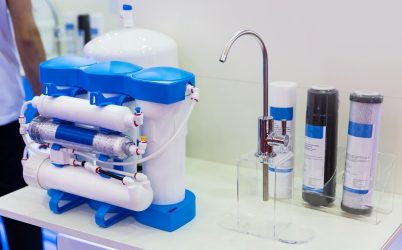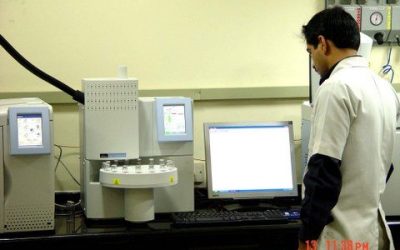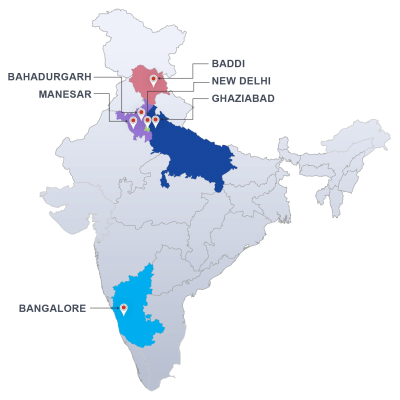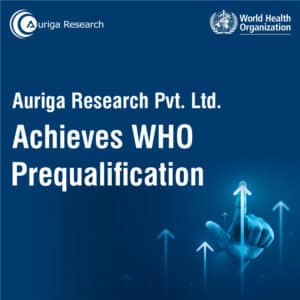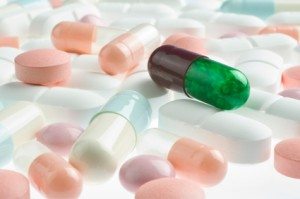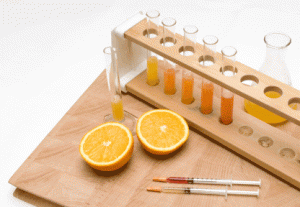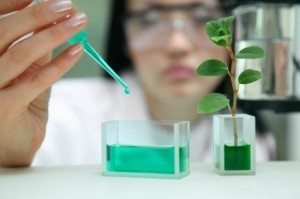Have you ever thought that the water that you sip might contain microplastics in it? In fact, not just water but table salt, milk and milk products, carbonated drinks, beer, spirits, and many more things we consume daily contain tiny ubiquitous fragments of plastics that gradually deteriorates the health of consumers.
Microplastic pollution is a topic of increasing concern to society. The term “microplastics” was introduced approximately a decade ago to describe small synthetic plastic particles (Man-made polymers). A global survey found microplastic particles within all sampled locations.
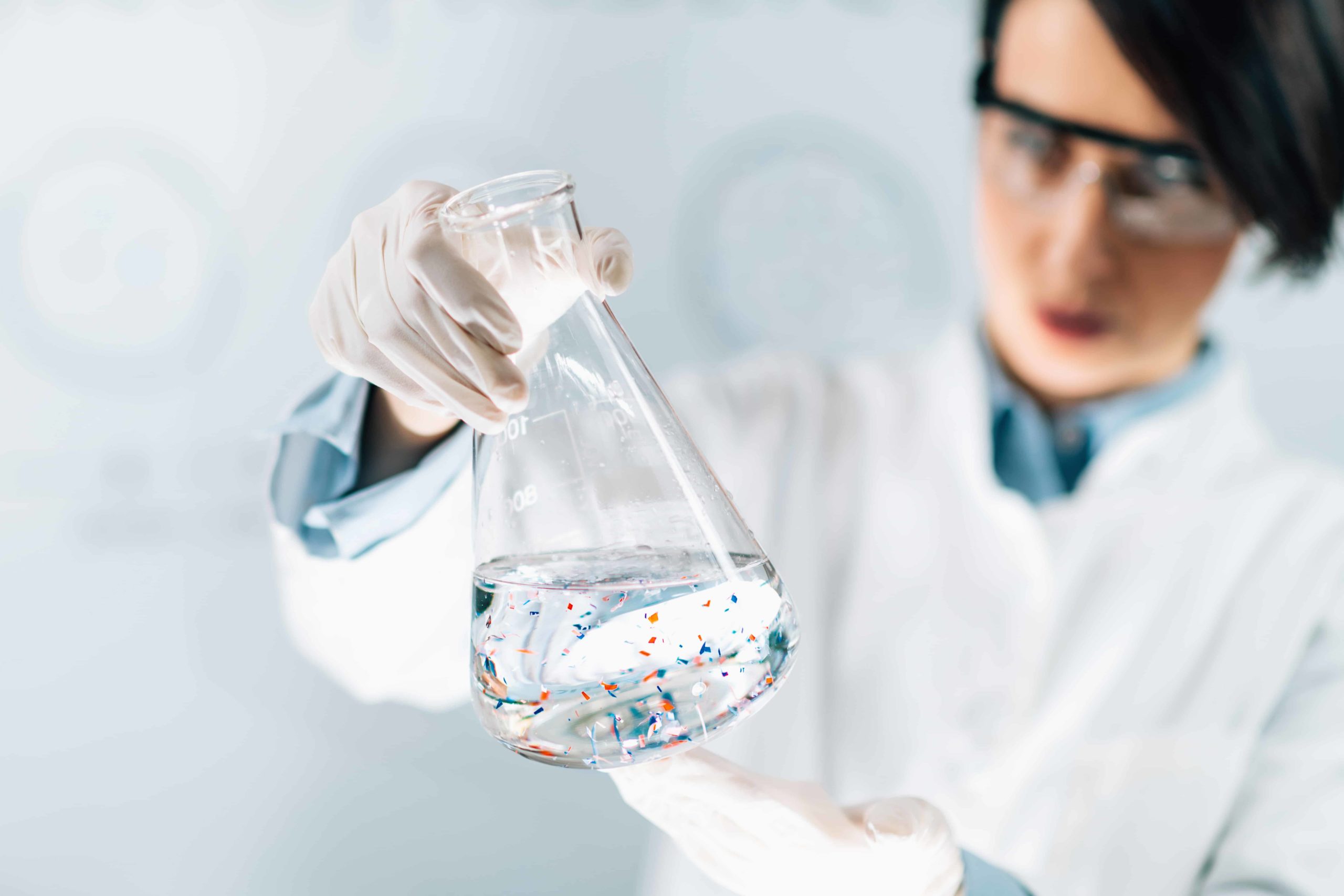
Fig1. Microplastics in Water
A glance at some common questions asked to learn about microplastics;
What are microplastics?
Microplastics (MPs) are particles of principally synthetic polymeric composition in the microscale and the typical range is between 1 μm and 5 mm.
Where do we find microplastics?
Microplastics are ubiquitous in the environment and have been detected in marine water, wastewater, freshwater, food, air, and drinking water, both bottled and tap water.
What is the source of microplastics?
Important sources of microplastics are plastic fibres from textiles/laundry wash (synthetic plastic fibers shed from polyester, nylon, or acrylic textile materials during washing), abrasion of automobile tires, industrially produced plastic pellets, health and beauty products contain microbeads (for example toothpaste and soap) and plastics that are dumped to the environment instead of being recycled will eventually break into smaller plastic particles.
Why is microplastic contamination so serious?
Microplastic (MP) contamination of aquatic environments is expected to rise, hand-in-hand with the continuous rise in plastic production, use, and waste. MPs have also entered the food web (Fish salt & Drinking water), thus becoming an emerging food safety issue and risk. Emerging risk in terms of food safety is defined as a risk posed by possible significant exposures to a recently identified (emerging) hazard. The World Health Organization (WHO) examined the potential human health risks associated with exposure to microplastics through drinking water.
How many numbers of microplastics are reported in drinking water?
As per the WHO report, individual samples ranged from 0 to over 10000 particles/L and mean values ranged from roughly 1000 particles/L in a study of drinking-water derived from groundwater to over 1000 particles/L across different geographies of the world. A study in Germany on bottled water of 22 major brands was found 93-percent positive for some level of microplastic(14-118 particles/L) contamination and the same study also reported that plastic bottles can inherently contribute to the particle load by leaching microplastics into drinking water products.
What are human health risks associated with microplastics in drinking water?
Studies on human health risks associated with microplastic exposures are inadequate. Plastics are generally not considered as highly toxic materials. Plastic is insoluble and not digestible, they are unlikely to be absorbed from the gastrointestinal (GI) tract, and generally does not interact with biological matrices. However, particle size may influence absorption and toxicity (i.e. smaller particles may pose a greater hazard). Some studies suggest that smaller particles may deposit in the intestines or even spread to the blood, kidneys, liver, pancreas, and other vital organs. Some researchers suggested that these particles can initiate inflammation and immune response in the body for long-term exposure or overall health impact is currently a mystery.
Plastics can also contain additives (Phthalates, Polybrominated diphenyl ethers and lead or cadmium-containing colorants) and unbound or free monomers like Acrylamide, 1,3-butadiene, ethylene oxide Epichlorohydrin, 1,4-dichlorobenzene, styrene, and vinyl chloride which may leach out either into the surrounding water environment before human consumption or potentially, into the GI tract to become bioavailable under some circumstances. These additives and monomers have been proven to be endocrine disruptors (EDCs); these may potentially interfere with the development of the endocrine system and affect the functioning of organs that respond to hormonal signals. Recent science has associated EDCs with various diseases and conditions, such as hormonal cancers (breast, prostate, and testes), reproductive problems (genital malformations, infertility), metabolic disorders (diabetes, obesity), asthma, and neurodevelopmental conditions (learning disorders, autism spectrum disorders).
The second indirect concern is the hydrophobic nature of microplastics. Due to the hydrophobic nature of microplastics can absorb the suspected carcinogenic hydrophobic chemicals, such as persistent organic pollutants (POPs), including PCBs, PAHs, and organochlorine pesticides from the environment.
A third concern is microbial pathogens that are part of biofilms (colonized on microplastics). Most microorganisms that are part of biofilms are non-pathogenic. However, some biofilms can include pathogens such as Pseudomonas aeruginosa, Legionella spp., non-tuberculosis Mycobacterium spp., and Naegleria fowleri.
Analysis of Microplastics at Auriga Research
Our Scientists at Auriga can detect and quantify diversified categories/compositions of microplastics(Nylon, Polyesters, butadiene, PVC, PE, PET, etc.). The microplastic analysis is carried out in a wide variety of sample products such as Table water, Drinking water, Table salt, Milk and Milk products, carbonated drinks, Beer, Spirits, etc.
What Analytical technique is used for Microplastic analysis?
There are many methods of analysis of microplastics, prominent and simple one is the manual method, in which microplastics are recovered from the supernatant and filtered or sieved. The concentrate may be visually sorted before quantification by microscopic counting with or without tagging using dyes, but neither of these methods can unambiguously confirm the particles are plastics. FT-IR spectroscopy is the most desirable technique for the identification of microplastics for several reasons, including the efficiency of cost, reliability, and ease of use.
Additionally, infrared spectroscopy is non-destructive. FT-IR microspectroscopy (micro-FT-IR) is a tool that combines FT-IR spectroscopy with microscopy. Micro-FT-IR is particularly useful as it requires little sample preparation and can be used to identify microplastics directly on membrane filters. Micro-FT-IR analysis of plastics can be performed in either transmission or reflectance mode, therefore highly suitable for detecting microplastics in environmental samples.
What is the sample quantity required?
The sample quantity required for microplastic analysis is very minimal; it is just 1/10 of L.
References
- Report by World Health Organization (WHO): Microplastics in drinking-water (2019).
- Campanale, Claudia et al. “A Detailed Review Study on Potential Effects of Microplastics and Additives of Concern on Human Health.” International journal of environmental research and public health vol. 17, 4 1212. 13 Feb. 2020, doi: 10.3390/ijerph17041212.




